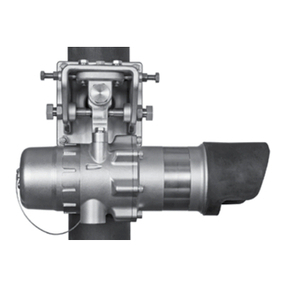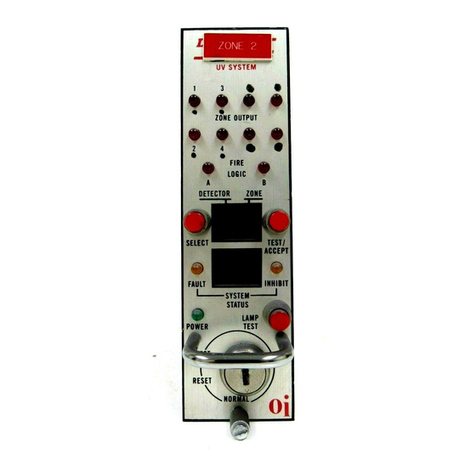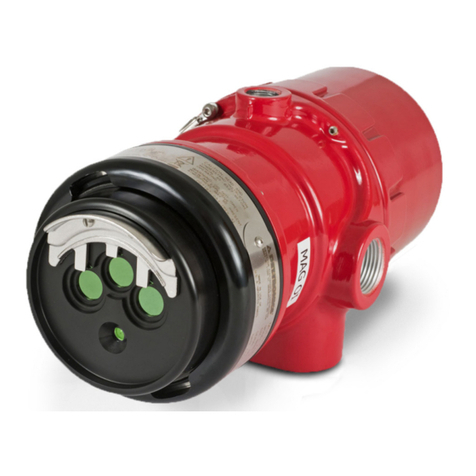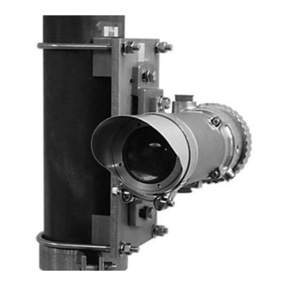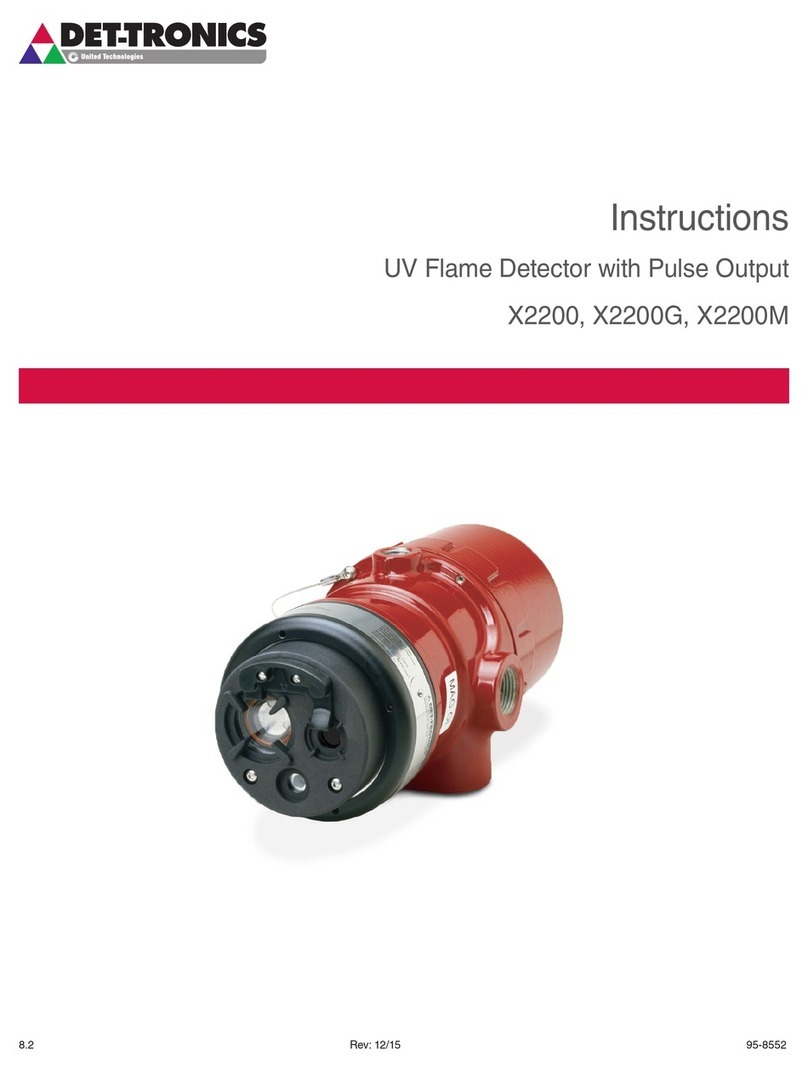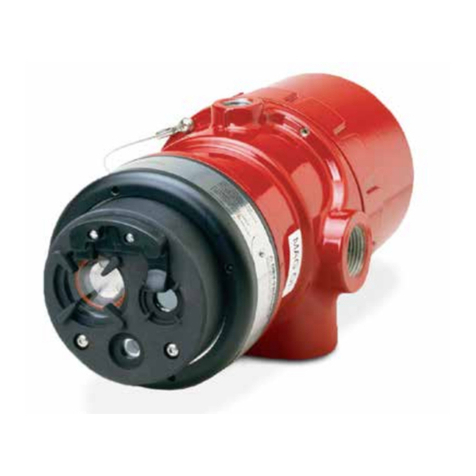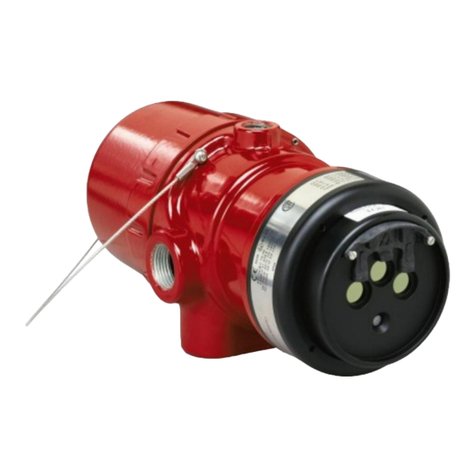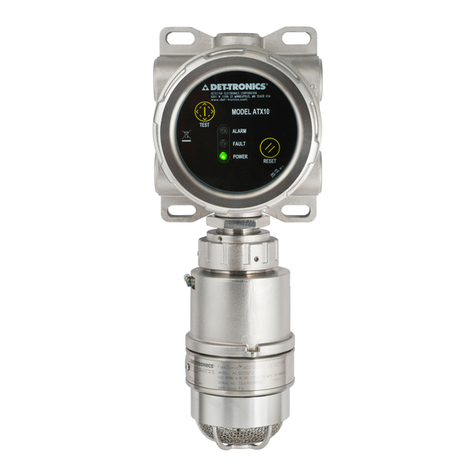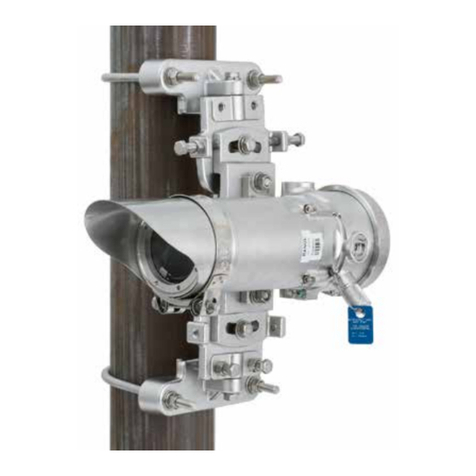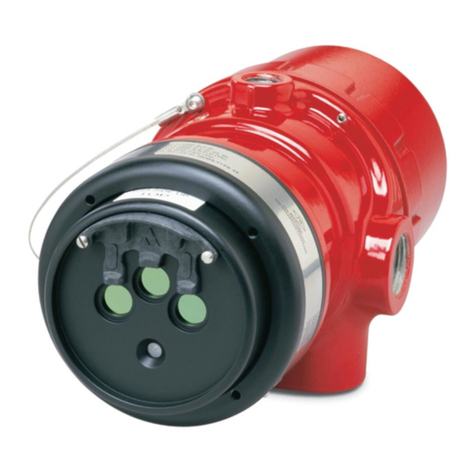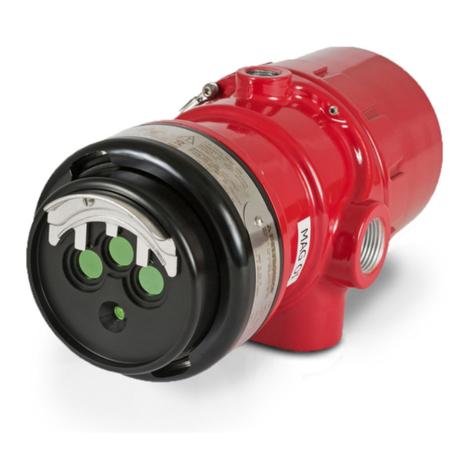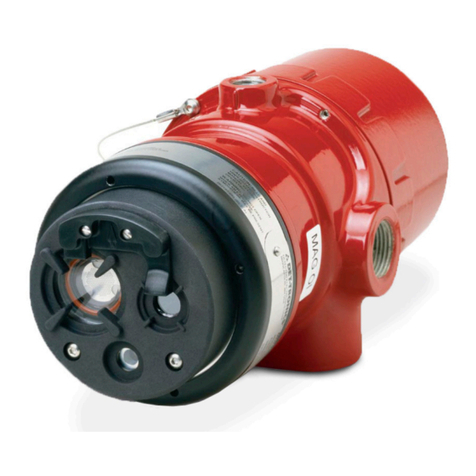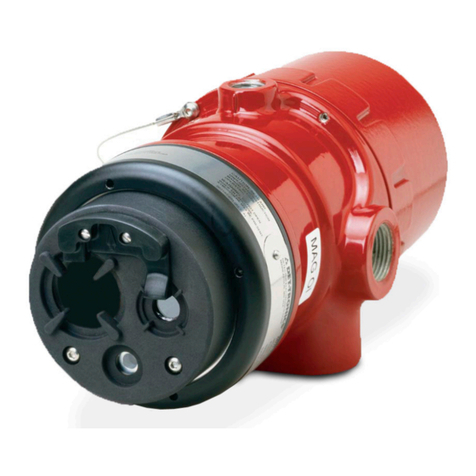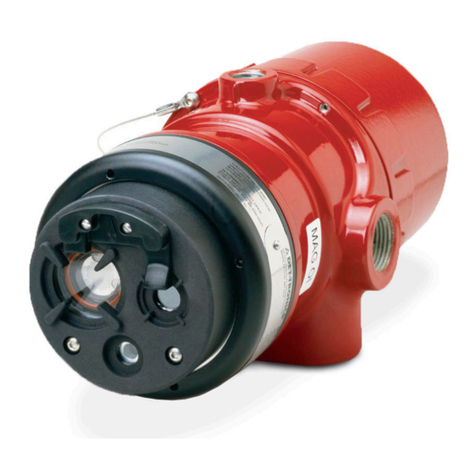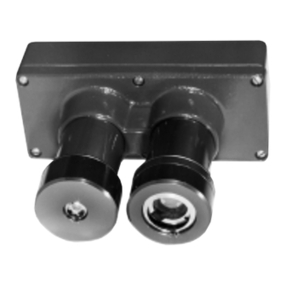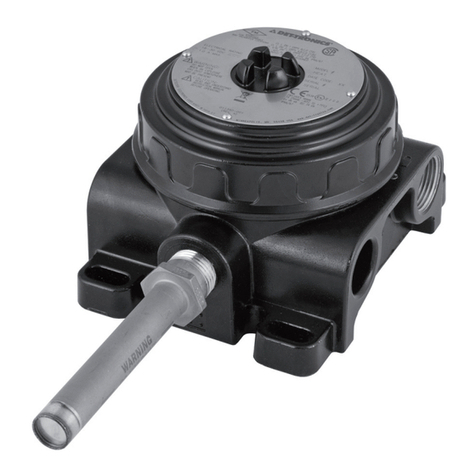
95-8704
4
2.7
GENERal aPPlICaTION
INfORmaTION
RESPONSE CHARACTERISTICS
Response is dependent on the detector's
sensitivity setting, distance, type of fuel,
temperature of the fuel, and time required for
the fire to come to equilibrium. As with all fire
tests, results must be interpreted according to
an individual application.
See Appendix A for third-party approved fire test
results. Additional fire test results are available
from Det-Tronics.
IMPORTANT APPLICATION CONSIDERATIONS
In applying any type of sensing device as
a fire detector, it is important to know of any
conditions that can prevent the device from
responding to fire, and also to know what other
sources besides fire can cause the device to
respond.
Welding
It is recommended that the system be
bypassed during welding operations in
situations where the possibility of a false
alarm cannot be tolerated. Gas welding
mandates system bypass, since the gas torch
is an actual fire. Arc welding rods can contain
organic binder materials in the flux that burn
during the welding operation and are detectable
by the X3301. Welding rods with clay binders
do not burn and will not be detected by the
X3301. However, system bypass is always
recommended, since the material being welded
may be contaminated with organic substances
(paint, oil, etc.) that will burn and possibly cause
the X3301 to alarm.
Due to the possibility of an alarm condition,
arc welding should not be performed within
40 feet (12.2 m) of the detector configured
to very high sensitivity, within 10 feet (3.0 m)
at medium sensitivity, within 5 feet (1.5 m) at
T-Low sensitivity, or at Low sensitivity.
Articial Lighting
The X3301 should not be located within 3 feet
(0.9 m) of artificial lights. Excess heating of the
detector could occur due to heat radiating from
the lights.
EMI/RFI Interference
The X3301 is resistant to interference by EMI
and RFI, and is EMC Directive compliant. It will
not respond to a 5 watt walkie-talkie at distances
greater than 1 foot (0.3 m). Do not operate a
walkie-talkie within 1 foot (0.3 m) of the X3301.
Background IR Sources
IR energy is emitted from fire as well as non-
fire sources. Because non-fire sources may in
some cases emit IR energy in wavelengths that
are monitored by the detector, special detector
installation and configuration considerations
need to be given in these situations.
The detector differentiates fire from non-fire sources
by using optical filters and algorithms that analyze
the characteristics of the IR energy that is within its
field of view (FOV). Typically, non-fire IR sources do
not qualify these algorithms. However, if an object or
person moves between the non-fire IR source and
the detector the randomly modulated IR energy that
is produced could mimic a fire signal.
In order to optimize the detector’s false alarm rejection
performance, it is preferred that the detectors FOV
be controlled to the area that requires flame detection
monitoring. Whenever possible, sources of intense IR
emissions should be eliminated from the detector’s
FOV. Although elimination of all background IR
sources may not be possible, controlling the
detectors FOV through careful installation and aiming
will help to optimize the detector’s performance.
It is recommended that a flame detector that has
an intense IR source within its FOV (e.g., turbine
enclosure, fin-fan cooler) be inhibited prior to
personnel working on or in close proximity to the
detector. Consult the factory for software and
hardware configurations that can help mitigate
the effects of background IR sources.
Non-Carbon Fires
The X3301 is a multiple spectrum IR device
with detection limited to carbonaceous fuels.
It should not be used to detect fires from fuels
that do not contain carbon, such as hydrogen,
sulfur, and burning metals.
ImPORTaNT SafETy NOTES
WARNING
Do not open the detector assembly in a
hazardous area when power is applied.
The detector contains limited serviceable
components and should never be opened.
Doing so could disturb critical optical
alignment and calibration parameters,
possibly causing serious damage.
